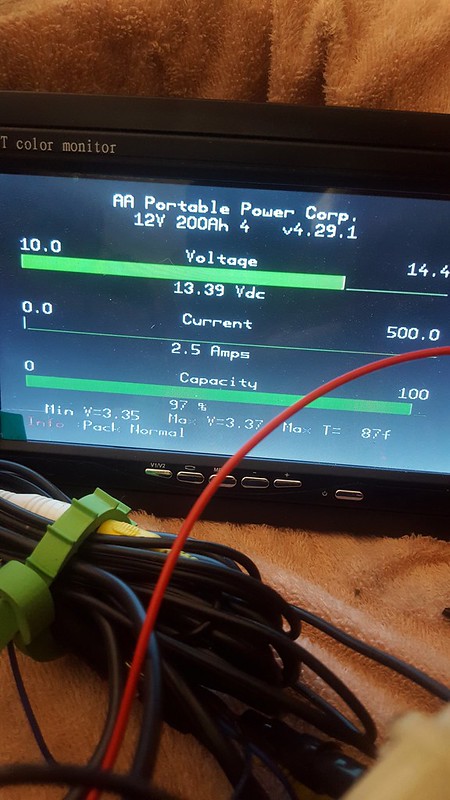WIW Nisan limits to 10/90. Nissan limits charge voltage to 4.1 vpc, full SOC is 4.3. On the discharge side has a few levels
Charge Terminate at 4.1 volts.
Very Low at 3.625
Limp Home or Turtle Mode at 3.22
Call Tow Truck or Shutdown at 3.2
Destroyed at 3.0 volts.
They will never let you go to 4.3 volts (100% SOC) or 3.0 volts (0% SOC). My controller is set to Float at 103 volts, and Motor Controller LVD at 90 volts. I run 25S aka 96 volt battery @ 66 AH
See that nice Slope. It is not FLAT like LFP. Makes it real easy to charge to any SOC you want.




Leave a comment: